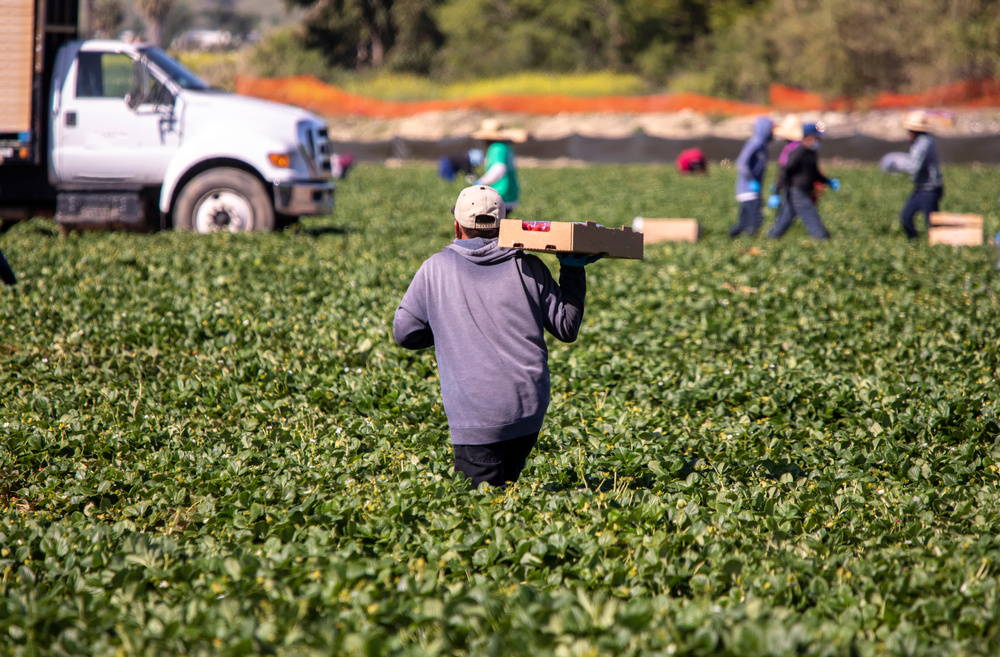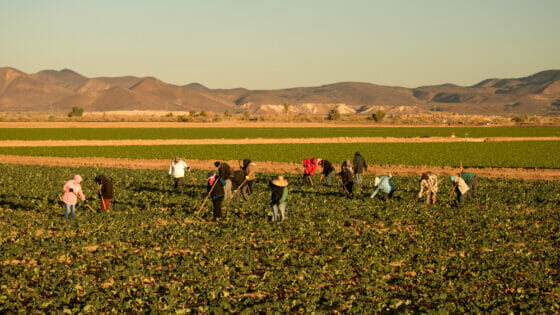The three-year average number of heat-related worker deaths has doubled since the early 1990s. Help has been too slow to materialize.

On a hot day in Florida in 2016, Haitian tomato picker Jean Francais Alcime fell ill in the field from heat stress. His supervisor tried to help, giving him water and putting ice on his neck, and she thought he seemed better. But on the two-hour bus ride home, the worker still did not feel right, and he told the coworker next to him that he needed help. The co-worker called the supervisor, who said they should call the paramedics once the bus arrived home. But it would be too late. Once the bus arrived and they tried to wake the worker, they found he was no longer breathing.
Although tragic, stories of agricultural workers dying from heat exposure have only become more prevalent—and in some cases, gruesome in the years since this particular incident. Sometimes, workers collapse in the field and their bodies are not found until later. Often, affected workers are within their first week on the job. In many cases, the deaths could have been prevented with proper precautions, regulation and information.
Recently, NPR and the Columbia Journalism Investigations team collaborated on an analysis of US Bureau of Labor Statistics (BLS) data, showing the three-year average of heat-related worker deaths has doubled since the early 1990s. Yet, the BLS estimate of 907 heat-related worker deaths from 1992-2019 is likely underreported. Heat is not always recognized as a contributor when a worker falls ill, and diagnosing a heat-related health event can vary by state, physician or coroner. Relying on self-reports of adverse health outcomes, such as those involving heat, can lead to estimate errors; additionally, some adverse heat-related health outcomes may take years to manifest, such as congestive heart failure or chronic kidney disease, which present after prolonged or repeated cases of heat-related illness (HRI).
All outdoor workers who engage in manual labor in hot environments are at increased risk of HRI and connected injuries and deaths, but agricultural workers are at particular risk. They have poorer overall health outcomes than other populations. They often are not able to modify their work environments. And pay structures such as a piece rate can create an incentive to work intensely and not take breaks. Workers may also have immigration statuses that render them politically and economically disempowered. H-2A workers represent a particularly vulnerable group: They frequently do not speak English and do not have agency over matters such as transportation, housing and worksite conditions. They may be reluctant to speak out about workplace conditions out of fear of losing their jobs, lack of language skills or lack of knowledge about resources.

Migrant farm workers hoeing a lettuce field in Yuma, AZ. (Photo: Shutterstock)
In an effort to better understand the impact of HRI on agricultural workers, a collaborative team of academic and community-based researchers from Emory University, the Farmworker Association of Florida and consultants from other institutions have examined the physical, environmental and occupational disparities that can lead to increased vulnerability.
The team found that half of the workers surveyed exceeded a core body temperature of 38 degrees Celsius (100.4 degrees Fahrenheit), and that more than 80 percent of workers were dehydrated after their shifts. Around three percent even had acute kidney injury (AKI) related to dehydration. As temperatures increased, the odds of AKI also increased.
But there were relatively simple interventions that also proved helpful in pilot studies. Workers who wore cooling bandanas had lower odds of exceeding a core body temperature. Workers who consumed water with electrolytes had less indication of AKI.
These data help form a picture of agricultural workers and their workplace environments that can assist advocates and inform policymakers in efforts to pass sorely needed occupational heat standards. In the United States, occupational heat exposure is not federally regulated beyond a broad and general clause requiring employers to furnish worksites that are free from hazards that can cause harm to employees. There are no specific federal regulations, but in 2021, the US Department of Labor initiated rulemaking to address heat injury and illness prevention. However, the rulemaking process can take years to complete.
Individual states can design and run their own OSHA-approved workplace safety and health programs and a few, including California, Washington and Oregon, have incorporated heat exposure standards into their respective programs. Some municipal governments have also adopted their own heat campaigns and standards. Current efforts at the state and local level can provide valuable templates and lessons for federal efforts and for other states and municipalities considering protective measures.
As global temperatures continue to rise, it is inevitable that the rates of HRI and related injuries and deaths among high-risk occupational groups will also increase. Worker advocates are calling for OSHA to implement emergency preventative measures before a final federal rule is implemented. Such measures include regulating work pace and workloads during extreme temperatures, providing mandatory rest breaks and cooling spaces, requiring employers to keep strict records on the potential for workplace HRI and mandating heat stress training for employees. The combination of these types of workplace protections, proactive measures from all levels of government, continuing community-engaged research and community-level heat awareness campaigns represents the type of multi-faceted approach necessary to jumpstart a shift in current work culture and provide adequate safety for the nation’s most vulnerable workers.
Joan Flocks is the director emeritus of the Social Policy Division at the University of Florida (UF) Levin College of Law’s Center for Governmental Responsibility. She also previously served as the director of Emerging Issues at the UF Southeastern Coastal Center for Agricultural Health and Safety.
This article is based on a thought piece written for a colloquium hosted by the University of Pennsylvania’s Perry World House, “Living with Extreme Heat: Our Shared Future.”
EVERYONE working outside in hot weather deserves all the protection possible from the heat. Just the right thing to do.
The reall issue here js that the majority of farm laborers are paid by the piece not by the hour. They are incentivized to hustle, the faster you work the more money you make. So they literally run back and forth picking as long as the boss will let them. This is driven by market price which we as consumers are responsible for. I have a crazy idea for a win-win solution… plant rows of trees for shade and wind breaks. The trees could even be a crop! And maybe incentivize farmers to pay hourly so they dont pass on… Read more »